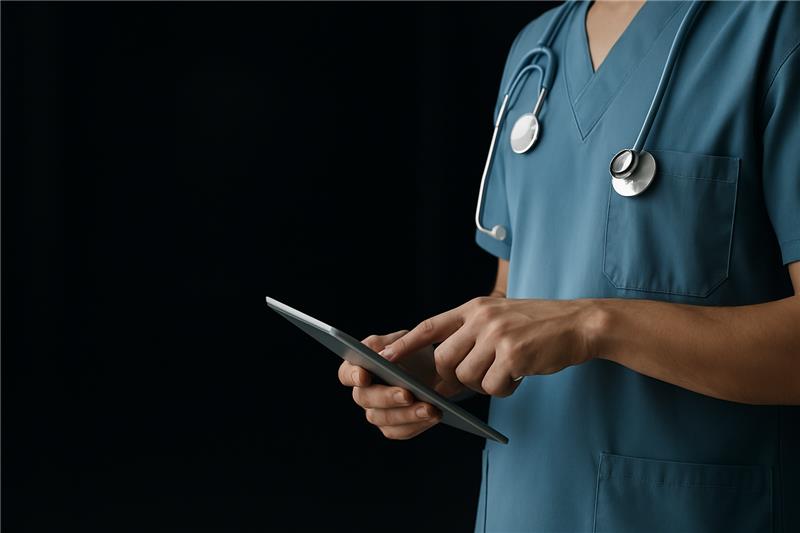
Lab Automation: Transforming Modern Laboratories in 2025
Laboratories across the globe are undergoing a rapid transformation, driven by the need for speed, accuracy, and efficiency. Lab automation—the integration of robotics, artificial intelligence (AI), and digital platforms into laboratory workflows—is redefining how research, diagnostics, and industrial labs operate.
According to market insights, the global lab automation market, valued at US$5.97 billion in 2024, reached US$6.36 billion in 2025 and is projected to grow at a robust CAGR of 7.2% from 2025 to 2030, culminating in a valuation of US$9.01 billion by 2030. This surge reflects the rising adoption of automated lab systems, AI-driven research, and smart laboratories worldwide.
What is Lab Automation?
Lab automation refers to the use of advanced technologies—such as robotics, AI, cloud platforms, and digital workflows—to perform laboratory tasks with minimal human intervention. These systems automate repetitive and time-consuming processes like sample preparation, liquid handling, and data analysis.
By reducing manual effort, laboratories can:
- Improve efficiency
- Minimize human error
- Standardize processes
- Accelerate time-to-results
Why Lab Automation Matters Today
In 2025, the demand for laboratory workflow automation has never been greater. The convergence of biotechnology trends, precision medicine, genomics research, and digital health innovation has created an urgent need for faster, more reliable lab outputs.
From drug discovery and clinical diagnostics to environmental testing and food safety, automation is ensuring that labs remain competitive, scalable, and future-ready.
Key Lab Automation Technologies
Robotics in Lab Automation
Robotics are revolutionizing laboratory workflows by automating repetitive tasks such as pipetting, sample handling, and high-throughput screening. These systems reduce contamination risks while significantly improving throughput.
AI and Machine Learning in Labs
The integration of AI in laboratory automation enables advanced data analytics, predictive modeling, and real-time decision-making. AI-powered algorithms help scientists interpret complex biological data faster than ever before.
Cloud and IoT Integration
Cloud-based lab platforms and IoT-enabled devices are transforming labs into smart laboratories. These technologies support remote monitoring, digital collaboration, and seamless data integration across multiple systems.
Benefits of Lab Automation
Speed and Accuracy
Automated systems can process thousands of samples in a fraction of the time, with unparalleled precision.
Cost Efficiency
By reducing labor-intensive tasks and minimizing errors, labs can achieve significant cost savings in the long run.
Improved Data Management
Automation ensures accurate, traceable, and easily retrievable datasets—essential for compliance, research integrity, and regulatory reporting.
Challenges and Limitations
Despite its advantages, lab automation faces some hurdles:
- High upfront costs for advanced robotics and AI platforms
- Integration challenges with legacy lab systems
- Need for skilled professionals to manage and maintain automated solutions
However, with falling technology costs and the rise of cloud-based lab platforms, adoption is becoming more accessible even for small and mid-sized labs.
Future of Lab Automation: Smart Labs & Digital Innovation
The next decade will witness the evolution of fully smart laboratories where AI, robotics, IoT, and digital twins converge. Key upcoming trends include:
- AI-driven research for drug discovery and personalized medicine
- Cloud-enabled collaboration across global research hubs
- Automated diagnostics for real-time disease detection
- Integration with precision medicine and genomics research
As labs embrace digital transformation in healthcare and life sciences, automation will become not just an option but a necessity.
Practical Tips for Adopting Lab Automation
For labs planning to embrace automation, here are some actionable steps:
- Start Small: Automate repetitive, high-volume tasks first.
- Evaluate ROI: Focus on areas where automation delivers the greatest cost and time benefits.
- Choose Scalable Solutions: Opt for modular platforms that grow with your needs.
- Train Staff: Upskill lab professionals to work seamlessly with automated systems.
- Ensure Compliance: Align automation strategies with regulatory standards.
Conclusion
Lab automation is no longer a futuristic concept—it is here, reshaping how laboratories function in 2025 and beyond. With the global lab automation market projected to reach US$9.01 billion by 2030, the momentum toward AI-driven, cloud-enabled, smart laboratories is undeniable.
Labs that embrace automation today will unlock faster discoveries, improved diagnostics, and long-term competitiveness in the evolving world of biotechnology, precision medicine, and digital health innovation.
If your organization is ready to accelerate research, improve efficiency, and stay ahead in the innovation race, now is the time to adopt lab automation solutions. The future of science is automated—make sure your lab is part of it.
Uncover the Strategic Roadmap Shaping Industry Transformation
Download this C-suite–focused executive guide featuring market intelligence, regional strategies, investment priorities, and policy readiness—powered by expert industry insights.
Download PDF Brochure80% of the Forbes Global 2000 B2B companies rely on MarketsandMarkets to identify growth opportunities in emerging technologies and use cases that will have a positive revenue impact.
- Food Packaging Market Size Set for Strong Growth Through 2030 Amid Rising Demand for Convenience Foods
- Fertilizers Industry Set to Grow at 4.1% CAGR Through 2030
- Leading Automated Guided Vehicle Companies 2024: An In-depth Analysis
- CHARGED UP: SHIFT TO E-MOBILITY AND THE EVOLUTION OF TRANSPORTATION
- Global Automotive Market: Predictions For 2024



